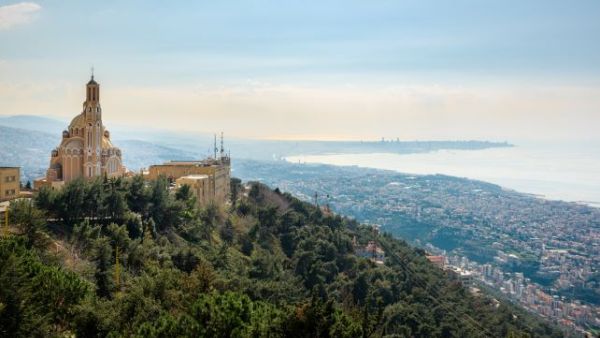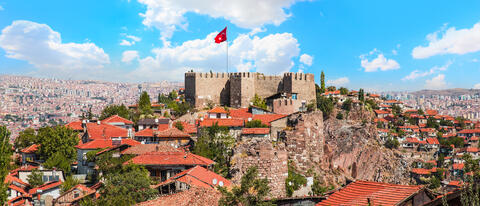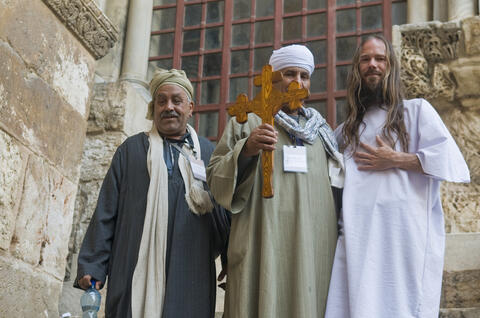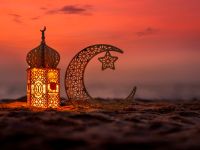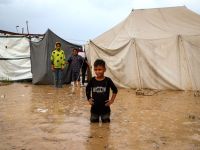By Farzad Ramezani Bonesh
Lebanon's geography is very complex, mountainous and diverse. The geopolitics of the country at the crossroads of the Mediterranean and the Arab world has led to the formation of a unique religious, racial and cultural diversity.
Lebanon has been the crossing point of various civilizations for thousands of years. Ethnically, there are Phoenician, Greek, Armenian and Arab elements in Lebanon. Ethnic groups, including Armenians and Kurds, are also present in the country.
The largest ethnic group is the Lebanese Arabs, but many of the population are also a mixture of different subgroups. Thus, almost all of the various races of the Middle East exist in Lebanon or have been influenced by Assyrian, Hebrew, and Persian races.
The official language is Arabic, although French, English, Armenian, Kurdish and Syriac are also used. The small country of Lebanon, with a population of about 6 million, has a complex and ethno-religious mosaic. There are more than 18 official religions in Lebanon.
Major Lebanese groups:
Lebanese Christians:
Christianity was promoted in Lebanon by Romans, and Lebanon now has 12 official Christian groups. There is no accurate demographic information on the number of different sects in Lebanon, and there has been no official census since 1932.
But, Maronite Catholics are the largest Christian group (with 22%), followed by Greek Orthodox with 8% of the Lebanese population. Other Christian groups include Greek Catholics (Melkites), Armenian Orthodox, Armenian Catholics, Syriac Orthodox, Syriac Catholics, Assyrians, Chaldean Catholics, Copts, Protestants (including Presbyterians, Baptists, and Seventh-Day Adventists), Roman (Latin) Catholics, and members of The Church of Jesus Christ of Latter-day Saints (Church of Jesus Christ).
The Maronites are scattered, but their main concentration is in the area between Beirut and Tripoli, and in the eastern neighborhoods of Beirut, the Maronites make up the majority of the population. Greek Catholics also make up about 5 percent of Lebanon's population.
Armenians, with about 4 percent of Lebanon's population, are concentrated mainly in northern Beirut, Tripoli, and some other areas. They entered Lebanon in the 18th century and then escaped the 1915 massacre and genocide. Smaller Christian groups are also present in various parts of Lebanon.
Christians have won 64 seats out of 128 seats of Lebanon’s parliament. Of the 64 seats for Christians, 34 are for Maronites, 14 are for Orthodox, 8 are for members of the Greek Church, 5 are for Armenians, and 3 are for other Christian minorities. According to previous agreements, the president is elected from the Christian majority, who has the upper hand in the removal and election of the prime minister.
However, some Lebanese Christians are concerned about the declining solidarity among Christians and therefore their political power, because a large number of Christians in this country have moved abroad. Some see the presence of Muslim refugees as a threat.
Lebanese Muslims
With the conquest of Lebanon by the Muslims, Islam and the Arabic language and culture became increasingly popular among the inhabitants. At the same time, the Sunnis in general are now concentrated in the northern parts of the country, and the Shiites are located in the southern parts. Of the 64 seats in the Lebanese parliament, 27 are for Shiites and 27 for Sunnis, eight for the Druze and two for the Alawites.
1.Lebanese Sunnis
Lebanon's Sunni community is one of the country's three largest political and ethnic groups (28%). Sunnis in Lebanon are often of the Shafi'i doctrine. In fact, the Sunni areas are in the north and in Tripoli. The majority of Lebanese Sunnis live in urban centers (such as Beirut, Sidon and Baalbek) or in villages such as the Akkar region.
The Lebanese Sunnis include right-wing, secular, left-wing, moderate Islamist parties and groups. However, there are also Salafi Islamist tendencies among them. According to the divisions, the prime minister must be of Sunni origin. Apart from the Druze, Shiites and Sunnis appear to be more present in Lebanese mosques.
2. Lebanese Shiites
The Lebanese Shiites are one of the three major Lebanese groups. Lebanese Shiites live in three main centers. Their traditional centers are in Al-Biqa and Jabal Amel, the region east of Tire, and the southern suburbs of Beirut. According to some sources, Shiites make up about 28 percent of the population, and some among Shiites want to increase their role in parliament.
Over the past three decades, Hezbollah's deep political activism has made the group the main representative of the Lebanese Shiites. However, there are other groups and parties such as Amal among the Shiites. The Lebanese Alawites living in areas such as Tripoli and Akkar are also Shiites, and some of them do not distinguish between the Twelver Shiites and the Alawites.
3. Lebanese Druzes
The Druzes are an ethnic-religious group based on Islam. 5.7% of the Lebanese population is known as Druze. They share many of the beliefs, roots and principles of Islam but are different. Some Muslims do not consider the Druze religion to be completely Islamic.
Smaller groups
Lebanon's religious diversity is in fact known beyond 18 religions. Lebanon has hosted a number of unrecognized small religious groups for many years. Therefore, smaller groups of Jews, Baha'is, Hindus, Buddhists, Jehovah's Witnesses, members of The Church of Jesus Christ of Latter-day Saints (known as Mormons), and various Protestant evangelical groups are also present in Lebanon.
The government also does not recognize many of them, including Baha'is, Buddhists, Hindus and several Protestant groups.
Developments over the past few decades have also led a number of smaller minorities such as Kurds, Zoroastrians and even some Yazidis to take refuge in Lebanon.
Refugees and Lebanese Diaspora
There are Palestinian refugees (mainly in refugee camps, Beirut, Sidon, Tire and Tripoli) and Syrian refugees (with more than one million) in Lebanon.
Lebanon has one of the highest proportions of immigrants living in the world. The migration of Lebanese groups abroad has occurred in several major waves. Waves such as the 1880s and 1947s, the Arab-Israeli war of 1967, the general uncertainty that took place between 1966 and 1976, the Lebanese civil war, etc. led to the number of Lebanese living outside the country becoming more than the number of the population living within the borders of this country.
The Lebanese diaspora is constituted of more than 14 million people living in Argentina, Brazil, Mexico, Chile, the United States and many countries in the Middle East, Africa and Asia. Another wave of Lebanese migration with more than two hundred thousand people happened in 2021. The role of the diaspora in helping various groups and even in the upcoming spring 2022 elections is important.
The relationship between Lebanese groups
Lebanon has historically been a haven for various groups. Most communities in Lebanon are not described as ‘minorities’. On the one hand, relations between Christians and Muslims in Lebanon are better than anywhere else in the Middle East, such as Egypt. On the other hand, every ethnic and religious group prefers to live with themselves. Religious identity, adherence to Arabic identity is very low among the people.
The political system in Lebanon, influenced by the specific situation of the country, is designed in such a way that all groups have a share of power. Therefore, government posts, public services, the army, and the judiciary are divided between groups. Thus, sectarian allegiances take precedence over national allegiances.
Religious divide also occurs in the Lebanese legal structure, and many personal legal matters (such as marriage) are handled by religious courts .Recognizing the differences and similarities between religious groups is an essential element for future political stability. Despite efforts, however, sectarianism is a feature of Lebanese politics.
Sectarian policies are seen as a necessity for maintaining balance between groups and preventing the collapse of the entire system or resolving sectarian strife or national security.
On the other hand, since 2019, the country has entered from one crisis to another. Formal and informal alliances (March 8 coalition and March 14 coalition) often exist across the religious divide, and incumbent parties remain strong.
Meanwhile, the mid-2022 parliamentary elections could be a strengthening step in Lebanon's political structure and also in transition from the country's political and economic challenges in recent years.


